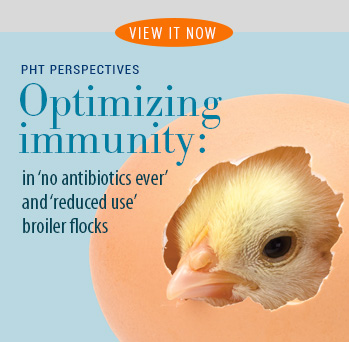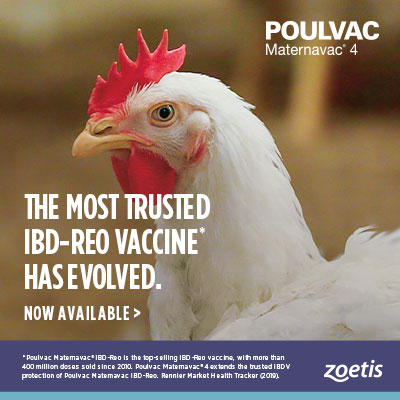Q&A: What’s behind FDA’s updated veterinary feed directive?

An interview with LLOYD KECK, DVM, senior technical services veterinarian, Zoetis
Q: What’s the reasoning behind the updated veterinary feed directive (VFD) rule that takes effect January 1, 2017?
LK: FDA recognizes the important role antimicrobials play in maintaining the health, performance and welfare of poultry and livestock. At the same time, it wants them used in ways that address public health concerns, specifically antimicrobial-resistant infections in people. FDA is, therefore, encouraging more “judicious” use of antimicrobials in food animals if the medications are considered medically important to human medicine.
Q: What does this mean in practical terms for poultry producers?
LK: It means FDA is requiring increased veterinary oversight when medically important antimicrobials are used in food animals. Before feeding a medically important antimicrobial to poultry flocks — chlortetracycline, tylosin or virginiamycin, for example — producers and their feed mill will need to obtain a VFD from a licensed veterinarian. If a medically important antimicrobial is to be administered in water, a traditional prescription from a licensed veterinarian —an Rx—is required as of January 2017. Fortunately, this new process should prove to be relatively seamless for integrated poultry companies that have full control over production, feed and veterinary care.
Q: Why has FDA focused on oral medications?
LK: Because they are well suited to mass administration — and therefore of greater concern than, say, injectable medications, which have to be given to one animal at a time and typically only for therapeutic purposes.
Q: What does FDA mean exactly by “judicious” and “non-judicious” use of an antimicrobial?
LK: Judicious use means administering an antimicrobial medication appropriately and only when really necessary. An example would be using an antimicrobial for treating clinically sick birds, to control a spreading disease or to prevent a prevalent disease like necrotic enteritis in flocks at risk, according to FDA.
Non-judicious use would be using a medically important antimicrobial without veterinary consultation or a VFD or using any antimicrobial — medically important or not — for a purpose not on the label.
Q: How does FDA determine which antimicrobials are medically important to humans?
LK: Medically important antimicrobials fall into three different categories: important, highly important and critically important.
An antimicrobial is important if there is cross-resistance within its drug class or linked resistance with other drug classes. These types of resistance occur when disease-causing bacteria become tolerant to one drug through exposure to another similar drug.
An antimicrobial is highly important if it’s used to treat enteric pathogens that cause food-borne illness, or if there are no or few other alternatives for treatment of human disease.
Finally, if it satisfies both of these criteria, FDA considers it critically important.
Q: Under the updated rule, can any in-feed antimicrobials be used to enhance the performance of poultry flocks?
LK: Not if they are deemed medically important by FDA. However, indications such as “increased rate of weight gain” and “improved feed efficiency” will still be approved for poultry antimicrobials that aren’t considered to be medically important. Examples are BMD (bacitracin methylene disalicylate) and Flavomycin 4 (bambermycins).
Q: As a poultry veterinarian, what are your thoughts on FDA’s updated VFD rule?
LK: I fully support government initiatives to promote more judicious use of medically important antimicrobials. Sure, it will mean a little more paperwork and recordkeeping for veterinarians, feed mills and producers, but it’s a minor inconvenience if it helps ensure long-term antibiotic efficacy for both humans and animals.
Furthermore, the new rule applies to less than 15% of the feed medications used in US poultry. The rest — ionophores, synthetic anticoccidials, bacitracin and bambermycins — are not deemed medically important by FDA and therefore won’t require a VFD.
Q: How will the industry know if the updated VFD rules have been a success?
LK: That remains to be seen. We know FDA and USDA are collaborating with other scientists to develop a new mathematical model that’ll provide a more complete picture of the relationship between antimicrobial use in food-producing animals and resistance. It will be important for all industry stakeholders — veterinarians, producers and feed-mill managers — to pay close attention to this evaluation process and make their voices heard.
![]() Download Q&A: What’s behind FDA’s updated veterinary feed directive? (pdf, 93 KB)
Download Q&A: What’s behind FDA’s updated veterinary feed directive? (pdf, 93 KB)
POU-00013
Posted on October 11, 2016
 We’re glad you’re enjoying
We’re glad you’re enjoying















